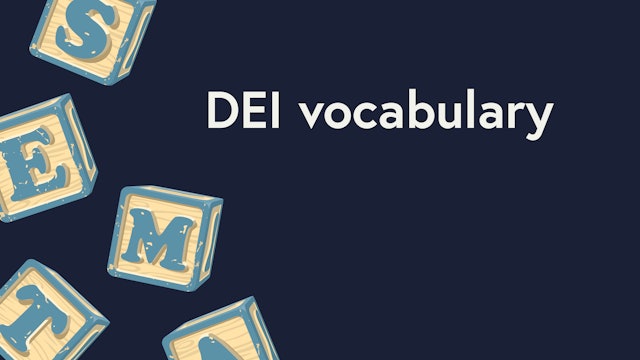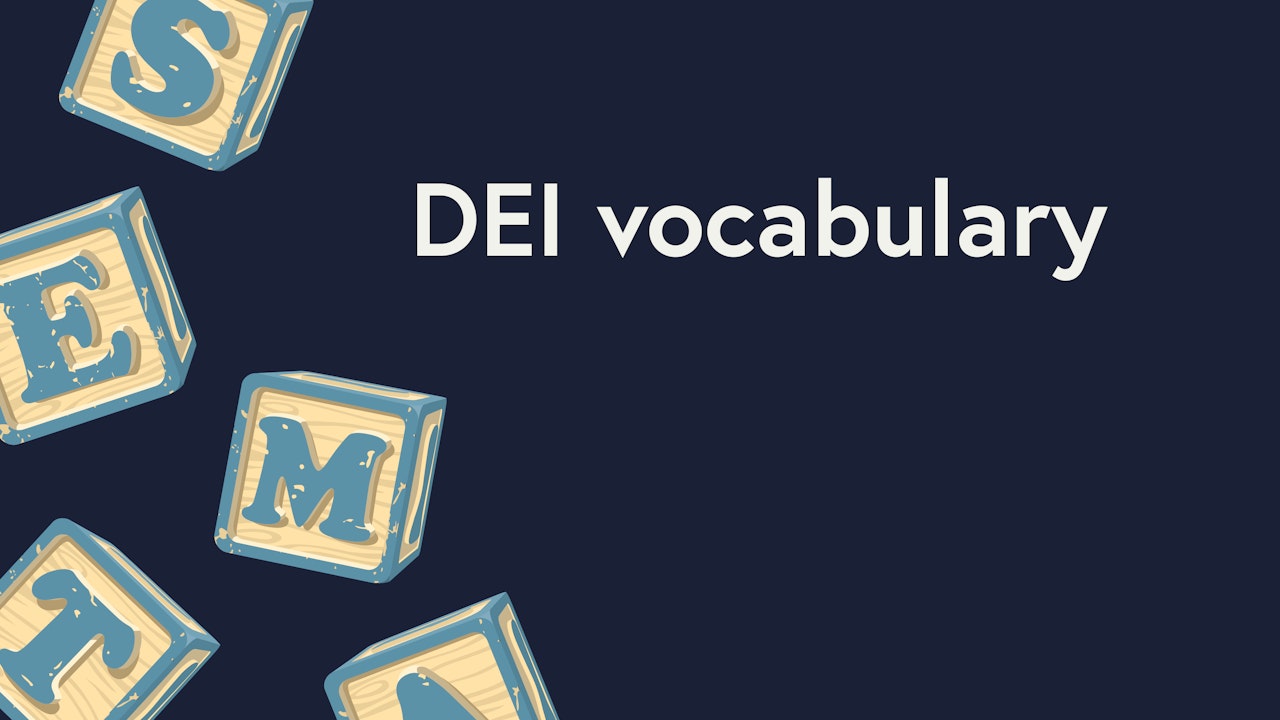-
What is Neurodiversity?
Expand your understanding of neurodiversity, the natural range of variations in human cognitive processing. Learn why the benefits of a neurodiverse team – greater innovation, problem solving and creativity -- make it more than worthwhile to accommodate the work styles of neurodiverse employees.
-
What is a Hostile Work Environment?
Focus on the variety of factors that can make a work environment hostile or abusive. Find out why harassment is an illegal form of employment discrimination and what your company can do to prevent it, address it, and bring it to a halt.
-
What is Dyslexia?
Learn more about dyslexia, a neurobiological learning disability that makes reading more challenging for roughly 1 in 5 people. Discover the high-level skills and competencies that often come naturally to people with dyslexia, adding to their value as employees and leaders.
-
Is Judaism a Race, a Religion, or a Nationality?
Gain a better understanding of the diversity of the nearly 15 million people worldwide who consider themselves Jewish. Learn the variety of ways that Jews describe themselves and how society today tends to categorize and label the multi-thousands of years old culture rooted in Judaism.
-
What is White Supremacy?
Confirm what is meant by the terms White supremacy, White privilege, and systemic racism, and the interconnections between the three. Consider how working toward inclusion and equity in the workplace helps to address race-based disparities and prejudice.
-
What is DEI?
Confirm the definitions of each component of the acronym DEI -- diversity, equity, and inclusion. Review the primary benefits that DEI delivers to organizations, their employees, and the customers they serve.
-
What are Diversity, Equity, and Inclusion?
Here’s a helpful overview of the three components of the acronym DEI: diversity, equity, and inclusion. Confirm how each of these contributes to the full and productive participation of all employees.
-
What is Coming Out?
Gain a better understanding of what it means to come out and how it’s a process that unfolds over time. Benefit from valuable tips on supporting LGBTQ+ inclusiveness in your organization, plus a short script that will help you to be a supportive, trustworthy ally when someone comes out to you.
-
What Are Examples of Gender Pronouns?
Review this helpful list of commonly-used pronouns that people use to reference their personal gender identities. Confirm why using each person’s preferred pronouns is an important part of inclusive communication. Recognize the benefits of consistently sharing your preferred pronouns with others.
-
What is Russophobia?
In the wake of Russia’s invasion of Ukraine, there has been a wave of anti-Russian sentiment in the United States and around the world. This generalized bias against an entire community causes harm to everyday people, and we are already seeing the ramifications of modern Russophobia.
-
What is Socioeconomic Class, and Why is Social Class Diversity Beneficial?
Recognize that bias against people from lower social and economic backgrounds is a common form of workplace discrimination that harms both workers and organizations. Learn how fostering social class diversity can increase your team’s engagement and productivity and your organization’s bottom line.
-
What are the Differences Between Nationality, Ethnicity, and Race?
Review these helpful definitions and analysis of the terms race, nationality, and ethnicity and the differences between them. Recognize why many people don’t fit neatly into or identify with a set of pre-defined categories.
-
What is the Difference Between Race and Ethnicity?
Race and ethnicity often go undifferentiated. However, these are two distinct categorizations of identity. Race typically refers to physical traits whereas ethnicity refers to cultural ones. Race is also often thought of as inherited while ethnicity is learned. Learn how race, ethnicity, and nati...
-
What is Colorism?
Open your awareness to colorism: prejudice or discrimination against darker-skinned people in favor of lighter-skinned people. Recognize the connection between colorism and white supremacy and consider the negative impacts of colorism in multiple racial and ethnic communities worldwide.
-
What is African-American Vernacular English?
Recognize the ways in which speech patterns of many African-Americans vary from non-community members, and are often judged negatively. Consider how an inclusive attitude toward this vernacular form of English will create an accepting and supportive work environment for African-American employees.
-
What is an ERG?
Here’s a helpful overview of Employee Resource Groups (ERGs), the reasons why companies form them, and how they engage and benefit employees who join them. Learn the most common types of ERGs and best practices for conducting them productively.
-
What is Inclusive Language?
Analyze what’s meant by “inclusive language,” perhaps more deeply than you have before. Consider how inclusive language differs from being “politically correct.” Learn how this valuable method of communicating can help you better honor, engage, and connect with others.
-
What is the Difference Between Sexual Orientation and Gender Identity?
Recognize that there is a broad and nuanced spectrum of ways that individuals identify and define their personal sexual orientation, gender, and romantic attractions to others. Confirm the difference between sexual orientation and gender identity and review the definitions of commonly-used terms.
-
What is Bisexuality?
Get a clear understanding of bisexuality and clear up some common misconceptions about this sexual orientation. Open your awareness to the types of discrimination often faced by bisexual people and confirm why it’s important to incorporate bisexuality into your workplace protections.
-
What is Intersectionality?
Clarify your understanding of intersectionality, a term that helps capture the complexity of each person’s identity. Recognize that some individuals face multiple barriers and forms of discrimination simultaneously.
-
What is Age Diversity?
Discover why integrating employees of all different ages results in teams that are more skilled, innovative, and productive. Consider the value that both older and younger employees bring to the mix and how cross-generational mentorships help employees of all ages become more competent.
-
What is the Difference Between EEO, Affirmative Action, and DEI?
Reinforce your understanding of the federal government’s Equal Employment Opportunity and Affirmative Action programs and the legal compliance they require. Compare these to voluntary DEI initiatives that generate enormous benefits to companies, their employees, and financial performance.
-
Is Intersex Considered a Gender?
Understand what intersex means, how it relates to gender, and why it would not be considered a gender identity.
-
What are Marginalized Groups?
Get a deeper understanding of the term “marginalized.” Recognize the many reasons that pushing specific groups of people to the sidelines of our society is both harmful to them and damaging to human culture. Confirm why treating people as individuals is key to eliminating marginalization.


























